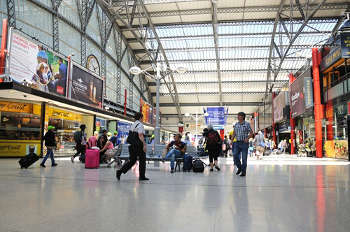The statistics watchdog has called for ‘substantial action’ to improve the official measure of rail passenger satisfaction so that it can be upgraded to an official National Statistic.
The Office for Statistics Regulation (OSR) published an assessment of the National Rail Passenger Survey (NRPS) statistics produced by Transport Focus.
It found the NRPS needed 'development and investment' before it could be designated a 'National Statistic'.
This is despite the NRPS statistics 'substantially meeting the standards and including some areas of best practice'.

Passengers at London's Liverpool Street Station
National Statistics have been assessed by the OSR as fully compliant with the Code of Practice for Statistics.
Ed Humpherson, director general for regulation, said: ‘The NRPS statistics really matter as they are used as a key performance indicator for train operating companies, to hold the rail industry to account and to assess the quality of train services provided to passengers.
‘These statistics are also the only publicly available measure for understanding rail passenger satisfaction across the rail network.
'Substantial collaborative action by Transport Focus, the Department for Transport and the rail industry is required to enhance the public value of these important statistics, so that they can be relevant and underpin an evolving rail industry.’
Transport Focus chief executive Anthony Smith said the survey was 'well on its way to being designated a National Statistic'.
‘The NRPS is a key tool for improving passengers’ experiences, by pinpointing exactly when and where things are going well – or not. The Transport Focus Strategic Road Users Survey is already continuous, so we know that further investment to extend the rail survey would boost the usefulness and reach of this insight.’
The OSR highlighted two ‘significant areas’ to address:
- The limitation of the survey, as it only measures passenger satisfaction in the spring and autumn each year. This does not capture the impact of passenger journeys outside of these periods, with any issues caused by national timetable changes in May and December, short-term effects following the annual fare increases each January, or extreme weather events at other times of the year not included; and
- The need to develop measures and capture broader passenger satisfaction based on an operators’ overall level of service, and not just with the last journey taken.
Register now for full access
Register just once to get unrestricted, real-time coverage of the issues and challenges facing UK transport and highways engineers.
Full website content includes the latest news, exclusive commentary from leading industry figures and detailed topical analysis of the highways, transportation, environment and place-shaping sectors.
Use the link below to register your details for full, free access.
Already a registered? Login